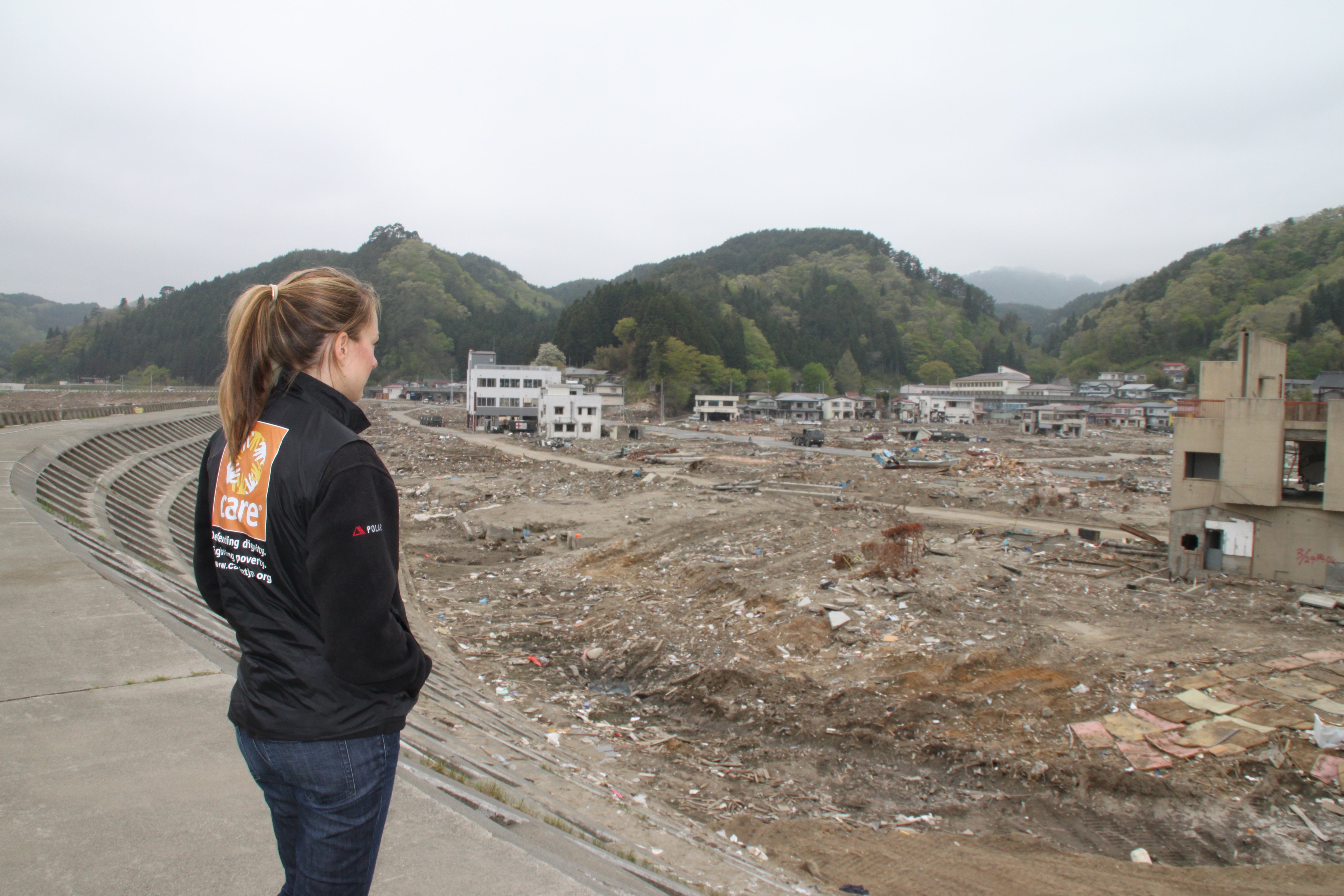UN World Conference on Disaster Risk Reduction - "Governments must collaborate and commit to reduce the loss in lives and livelihoods due to disasters", says CARE International
[ 2015.3.10 ]
In order to face the increasing impact of natural disaster, from the 14-18th of March the UN World Conference on Disaster Risk Reduction is organized in Sendai, Japan, a city that was hit during the 2011 Japan tsunami. Governments will agree on measures and priorities for the next fifteen years to reduce the number of disasters, and their impacts. Agreements need to be made on how to make people more resilient, and how to better protect infrastructure.
The toll of disasters, in losses of lives, and in economic terms are increasing. Between 2000 and 2012, disasters caused 1,7 trillion USD of damage, affected 2,9 billion people and killed 1,2 million**. Natural disasters threaten to undo much of the progress made over the last decade in global poverty reduction. And they are increasingly a concern, as climate changes, global temperature rises and people are less able to adapt. "We need to get better at preventing and mitigating disasters, rather than reacting to the death, damage and suffering they bring. A global agreement is crucial to guide and hold governments accountable to prioritizing and reducing disaster risks," comments Anne te Molder, Disaster Risk Reduction expert of CARE.
Disaster risk reduction (DRR) is about identifying natural hazards and reducing the vulnerability of people exposed to them. There is no such thing as a natural disaster. When a hurricane, flood, or earthquake occurs, it depends on the vulnerability of people how big the disaster will be. Helping poor communities prepare and strengthen their resilience saves more lives and costs less than emergency relief. Or by preventing, preparing, and mitigating the risks to a disaster, the impact will be less and people will be better able to recover.
"Though disasters are difficult to compare, it is worth noting that while typhoon Haiyan in the Philippines in 2013 claimed up to 8.000 lives, cyclone Nargis killed more than 138.000 in Myanmar in 2008. In the Philippines, thousands of lives may have been saved by systems for early warning and evacuation," te Molder explains. Community leader Ate Venie of San Nicolas community in Philippines participated in trainings organized by CARE. "CARE trained us on what we should do to prepare for disasters, for instance through well prepared evacuation plans and practices. They also helped us to plant trees which reduce the impact of heavy floods."
CARE International urges for 8 indispensable key elements in Disaster Risk Reduction towards a safer and more equal future:
1. A focus on gender equality
2. Address Climate Change
3. Strengthen Livelihood Resilience
4. Put communities at the centre in action and decision making
5. Integrate disciplines, from climate, environmental, humanitarian, recovery and development expertise
6. Ensure multi-stakeholder cooperation and good governance
7. Align the intergovernmental post-2015 processes, on Disaster risk, Development and Climate.
8. Commitment and financing to make this all happen.
CARE calls upon governments to commit to concrete targets to reduce loss of lives and livelihood. This requires financial commitments, monitoring, and accountability, and focussed attention to the role and participation of all groups in society, and in particular the meaningful inclusion of women and children, who are 14 times more likely than men to die during a disaster.**
This is the moment in order to truly invest in measures at community level, and coordination with all relevant stakeholders, governments, communities, private actors and knowledge institutes, in order to address the underlying drivers of risk. Governments meeting in Sendai have a real opportunity to show their citizens they are serious about reducing disaster risk for all groups in society. This must include increased support for the poorest, helping communities to prepare for and adapt to increasing risks.
* Source: UNISDR
** Kristina Peterson, 2007
MEDIA CONTACTS
Sarina Maat, Manager Corporate Relations & Partnerships,
Marketing & Communications, CARE Nederland
maat@carenederland.org Office: +31 70 310 50 33 Mobile: +31 6 1488 48 60

